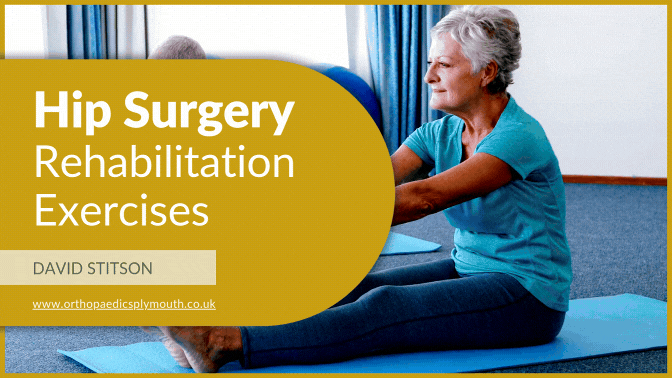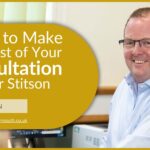Hip surgery, whether it’s a hip replacement or another type of procedure, can be a life-changing event that ultimately improves mobility and quality of life.
However, the success of the surgery heavily relies on the rehabilitation process. In this comprehensive guide, we will explore the importance of hip surgery rehabilitation exercises, provide examples, offer tips for effective rehabilitation and answer some frequently asked questions.
Contents
ToggleThe Importance of Hip Rehabilitation Exercises
Hip Surgery Rehabilitation Exercises are crucial for several reasons:
- Restoring Mobility: Post-surgery, it is essential to restore the hip range of motion and flexibility to resume daily activities.
- Strength Building: Strengthening the muscles around the hip helps to stabilise the joint and reduce the risk of future injuries.
- Pain Management: Exercises can alleviate pain and discomfort by promoting blood flow and reducing stiffness.
- Preventing Complications: Regular movement reduces the risk of complications such as blood clots and promotes overall healing.
5 Easy Hip Surgery Rehabilitation Exercises That You Can Do At Home
Example 1: Ankle Pumps
Purpose: Improves circulation and prevents blood clots.
How to Perform: Lie on your back. Flex your ankles up and down, mimicking the motion of stepping on a brake pedal.
Example 2: Quad Sets
Purpose: Strengthens the quadriceps muscle.
How to Perform: Sit with your legs straight. Tighten your thigh muscles by pushing the back of your knee down into the bed. Hold for 5 seconds and release.
Example 3: Glute Squeezes
Purpose: Strengthens the gluteal muscles.
How to Perform: Lie on your back with your legs straight. Squeeze your buttocks together, hold for 5 seconds and then relax.
Example 4: Heel Slides
Purpose: Increases knee and hip flexibility.
How to Perform: Lie on your back with your legs straight. Slowly slide your heel towards your buttocks, bending the knee. Return to the starting position.
Example 5: Hip Abduction
Purpose: Strengthens the outer thigh and hip muscles.
How to Perform: Lie on your side with the operated leg on top. Keep your leg straight and lift it away from the other leg. Hold for a few seconds, then lower it back down.
Every individual’s hip recovery journey is unique, so it is essential to work closely with your healthcare providers to tailor the rehabilitation process to your specific needs.
5 Essential Tips for Effective Hip Rehabilitation
Consistency is Key:
Perform exercises regularly as prescribed by your physiotherapist.Listen to Your Body:
Avoid overexertion. Pain beyond mild discomfort is a sign to stop and rest.Stay Hydrated:
Proper hydration aids in muscle recovery and overall healing.Maintain a Healthy Diet:
A balanced diet rich in protein, vitamins, and minerals supports tissue repair and energy levels.Follow Professional Guidance:
Always follow the advice and instructions of your healthcare provider or physiotherapist.
A vital part of Hip Replacement Surgery
Hip Surgery Advised Rehabilitation Exercises are a vital part of the recovery process following hip surgery. They not only restore mobility and strength but also enhance the overall success of the surgery. By following a consistent exercise regimen and adhering to professional guidance, patients can achieve a smoother and quicker recovery.
Remember, every individual’s recovery journey is unique so it is essential to work closely with healthcare providers to tailor the rehabilitation process to your specific needs. With dedication and the right approach, you will regain your mobility and return to a more active and fulfilling life.
If you have any concerns or questions, don’t hesitate to contact us as we are there to help you through every step of your recovery journey.
FAQs
Q: When can I start rehabilitation exercises after hip surgery?
A: You can usually start light exercises within a day of surgery, indeed often on day 1, but always follow your surgeon’s specific recommendations.
Q: How often should I do my hip rehab exercises?
A: Typically, exercises are done multiple times a day. Your physio will provide a schedule tailored to your recovery.
Q: What if I experience pain during exercises?
A: Mild discomfort is normal, but sharp pain should not be ignored. Stop the exercise and consult your physio if the pain persists.
Q: How long will it take to fully recover from hip surgery?
A: Recovery time varies but generally ranges from 6 weeks to 3 or 4 months, depending on the individual and the extent of the surgery.
Q: Can I perform hip rehab exercises on my own?
A: While some exercises can be done independently, it is important to start under the supervision of a physiotherapist to ensure proper technique and to help avoid complications.
About Hip Surgery
Total hip replacement surgery replaces the worn-out painful and stiff hip joint with a new prosthetic joint. This procedure is normally performed under spinal anaesthesia and is commonly followed by a night or two in the hospital. Day-case hip replacement surgery may be an appropriate option for you.

About Mr Stitson
David Stitson is a Plymouth-based Consultant Trauma and Orthopaedic Surgeon. Trained both in the UK and internationally, he has worked in medicine for more than 20 years for the NHS, for the Royal Air Force and in private practice. Mr Stitson operates privately at the Nuffield Health Hospital, Plymouth.

The Nuffield Plymouth CQC Rating
The Nuffield Hospital has a history that spans over half a century and has built a reputation for high standards of care, professionalism and expertise in delivering health services. They aim for continuous quality improvement in everything they do.
Active Quality and Governance programmes are in place at the Nuffield Hospital Plymouth. As part of this, the hospital is inspected by independent healthcare regulators to ensure it meets the fundamental standards of quality and safety as determined by the regulating body (CQC).
In the most recent inspection, Plymouth Nuffield Hospital was rated as ‘Good’ overall, however, the surgical element of the inspection was rated as ‘Outstanding’. The hospital was referred to as:
“Outstanding in effective and caring, and
Good in safe, responsive and well-led.”





